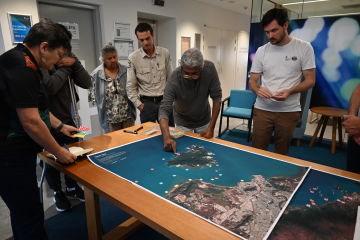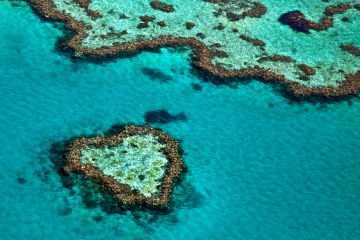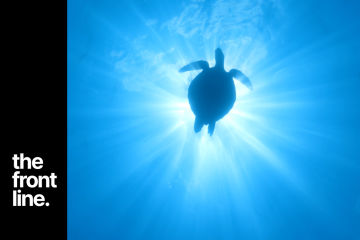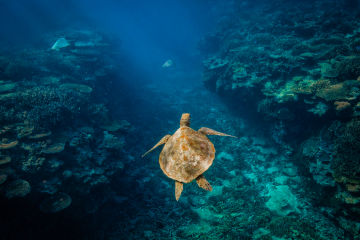News ·
Artificial intelligence (AI) is a game changer for turtle monitoring
Just in time for turtle nesting season, our partners at Queensland University of Technology (QUT) have developed the first artificial intelligence (AI) monitoring app for green turtles and seabirds funded by Raine & Horne Foundation.
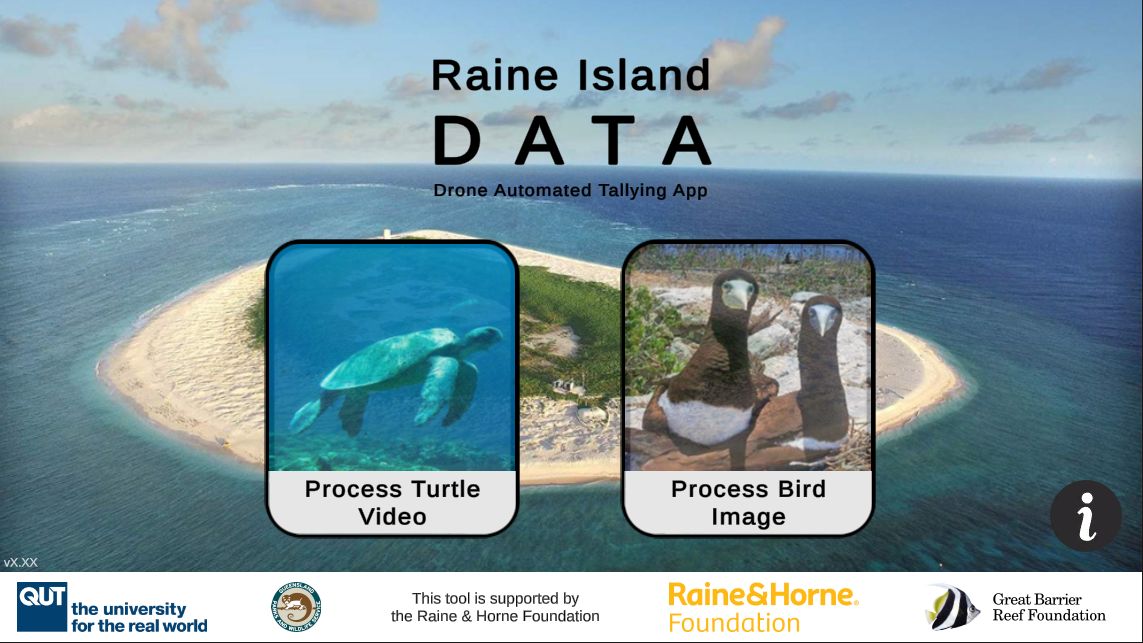
The game-changing AI software tool named the Raine Island Drone Automated Tallying App (DATA) has been successfully developed for Queensland Parks and Wildlife Service (QWPS), Traditional Owner (Wuthathi and Meriam Nation) rangers and scientists to use in the field during nesting season.
Raine & Horne Foundation donated $100,000 to the Great Barrier Reef Foundation to fund this transformational project. Raine & Horne has a family connection to Raine Island through Executive Chairman Angus Raine’s great-great grandfather Captain Thomas Raine who was the first European to sight the island’s shores in 1815.
Raine Island is the world’s largest green turtle rookery and is situated on the northern edge of the Great Barrier Reef. The island’s Traditional Owners, the Wuthathi and Meriam Nation People, hold strong cultural and spiritual connections to Raine Island and continue to play an important role in its conservation.
Monitoring the turtle population on the island during nesting season is critical if we are to protect this endangered species. However, with as many as 20,000 turtles nesting on Raine Island in a single night and a human count of 64,000 green turtles via drone footage in one season alone, research teams have turned to technology to automate how to monitor this incredibly important turtle population.
This application is installed on a desktop computer that can be operated onboard vessels where, in real-time, key personnel can process videos and images collected by drones to accurately count critical green turtle and seabird populations.
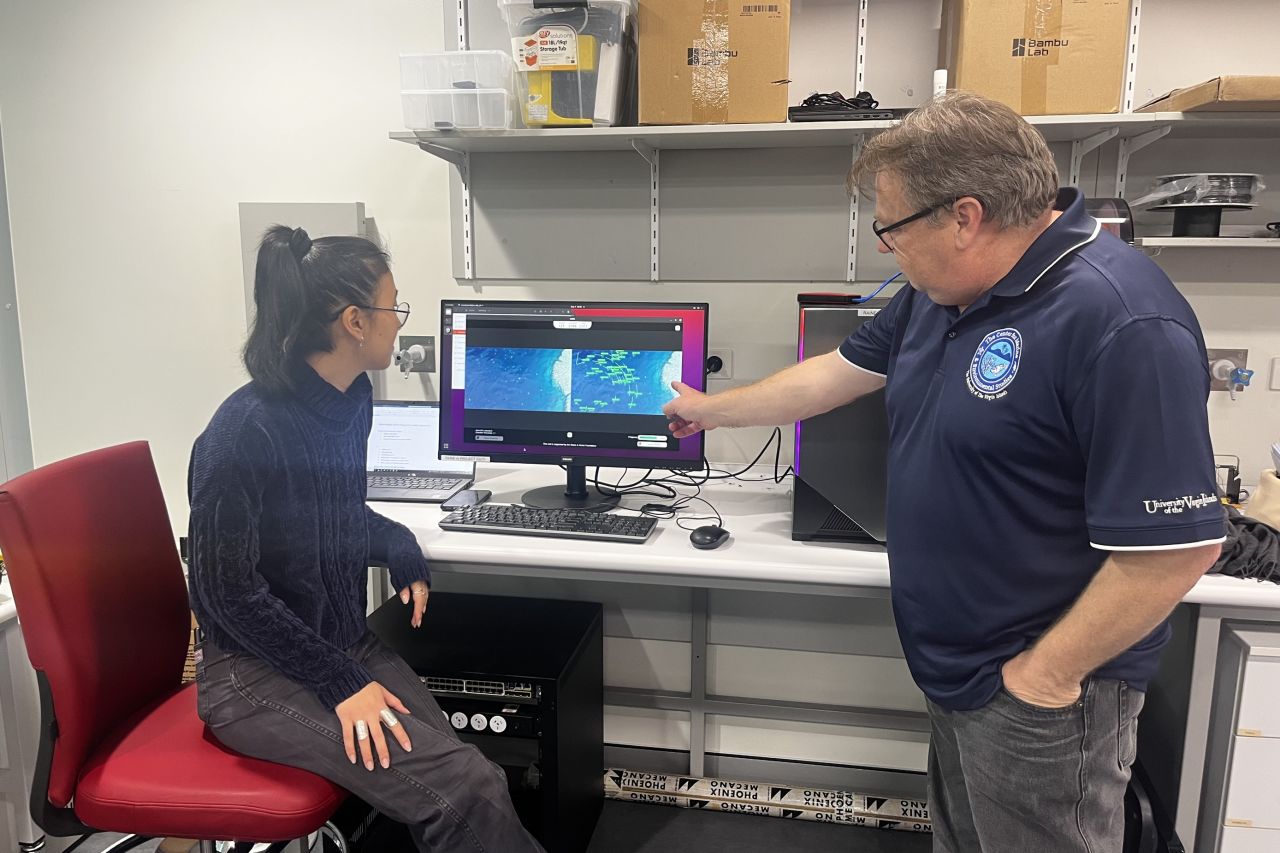
Project team members, Professor Matthew Dunbabin and Serena Mou demonstrating the App
The custom turtle tracking and tallying algorithms were found to be at least 20 times faster than human counting.
“Over the last three years, we have been working on different elements of AI-based tracking and counting of turtles and seabirds using images collected by drones and static cameras at Raine Island,” said Project Lead, Professor Matt Dunbabin from QUT.
“It was incredibly satisfying in August to have staff from QPWS visit our lab with a hard disk of new drone images from their last Raine Island trip and “feed” it into the app.
“The staff member seamlessly loaded the video files, pressed play, and we all watched as the turtle counts appeared in real-time.
“We have now loaded the software onto a computer ready to be taken to Raine Island on the next field trip where it will be used by rangers as they collect routine drone imagery,”
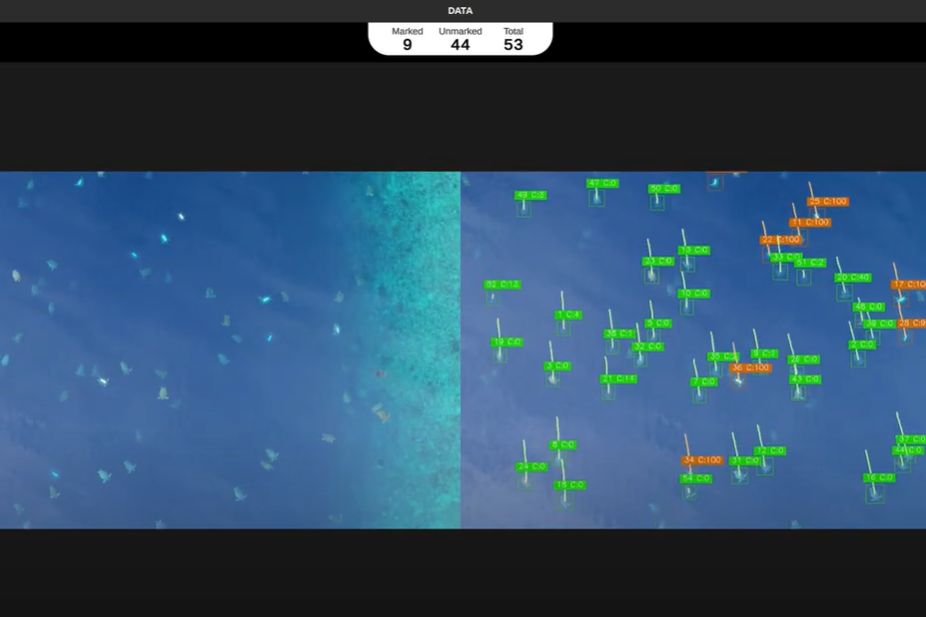
The App in action counting and tracking sea turtles
Great Barrier Reef Foundation Managing Director, Anna Marsden said “innovation and collaboration were at the heart of the project”.
“The Great Barrier Reef Foundation is very grateful for the generosity of the Raine & Horne Foundation, which is committed to conservation and sustainability, which enables us to continue to protect this irreplaceable ecosystem and the incredible diversity of wildlife that call it home,” said Ms Marsden.
“Putting this new turtle tracker and bird spotter technology in the hands of Queensland Park rangers, Wuthathi and Meriam Nation rangers, and Reef managers out in the field will give them the near real time information they need to make the best decisions to protect these vulnerable species.”
This project builds on the world-leading conservation program to protect and restore Raine Island pioneered by the Great Barrier Reef Foundation, BHP, Queensland Government, Great Barrier Reef Marine Park Authority, and Wuthathi People and Meriam Nation (Ugar, Mer, Erub) People.
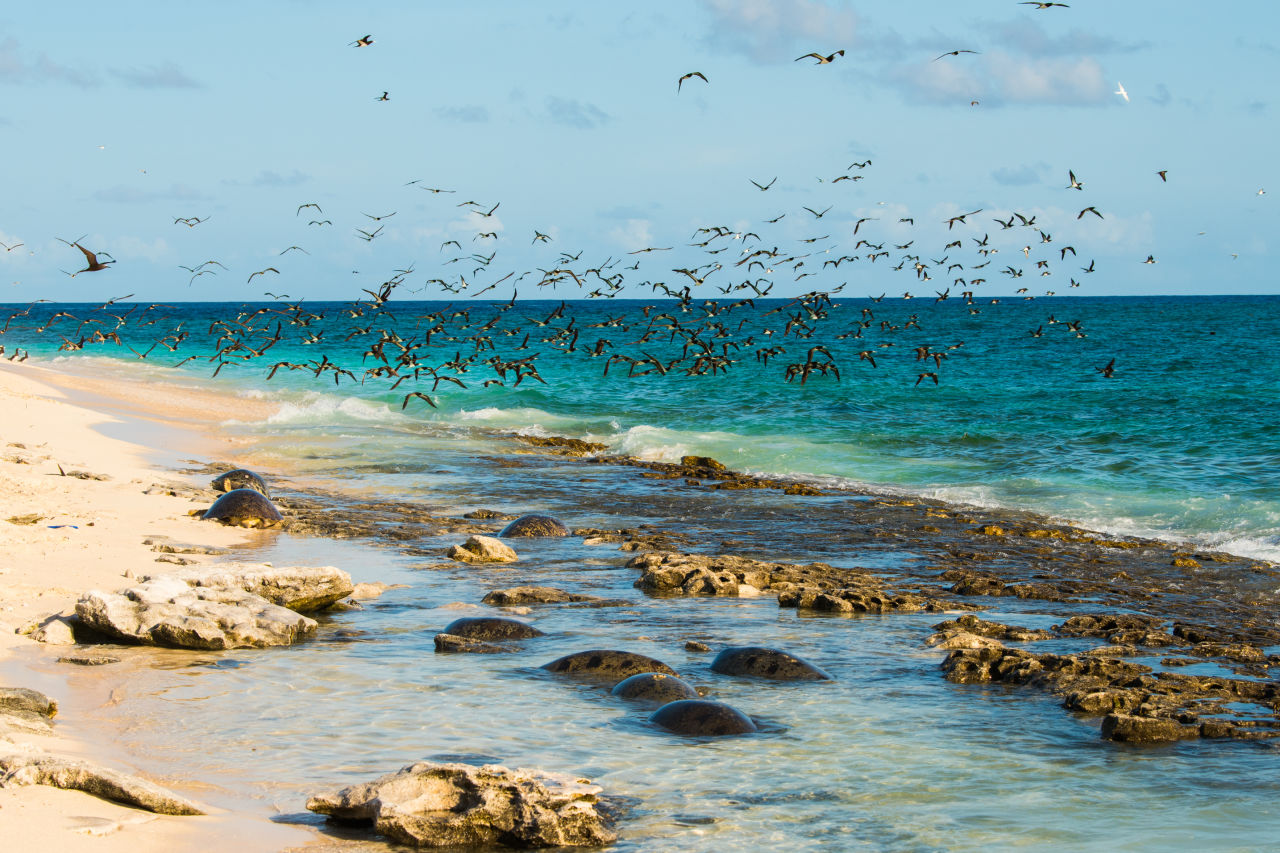
Nowhere on Earth do more green turtles come to nest than Raine Island.
Key project outcomes:
This project has successfully developed and delivered an AI-based field deployable software tool named the Raine Island Drone Automated Tallying App (DATA).
This tool allows rangers, managers and scientists to rapidly and accurately determine population totals of turtles and birds when in the field or back in the office.
The app also allows automated processing of raw drone images as well as processed orthomosaic maps of the island for identifying and counting seabirds.
The entire app has been carefully built for ease of use and allows data to be seamlessly uploaded directly from a drone whilst in the field.
The app allows new models to be added for processing drone data without the need for re-compiling.

